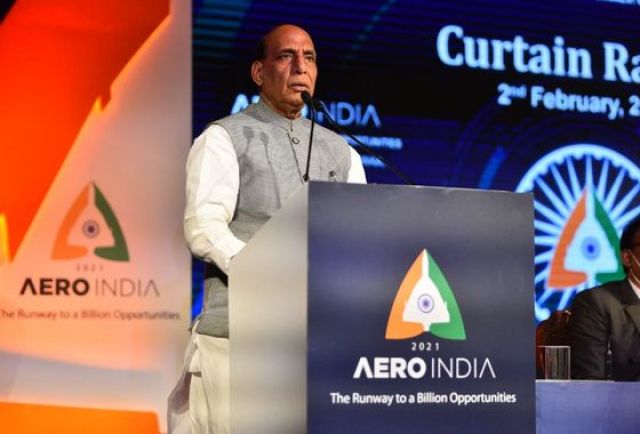TSAMTO, February 3. On the eve of the opening of the International Aerospace Exhibition Aero India 2021, which will be held from 3 to 5 February in Bangalore, the main planned indicators of the defense budget of India for 2021-2022 became known.
On February 1, the Federal Government of India announced its intention to increase defense spending in 2021/2022 by 1.45% to 4.78 trillion. Indian rupees ($65.4 billion).
For comparison: in the current year, defense spending is 4.71 trillion. Indian rupees ($64.4 billion).
According to Jane's Defense Weekly, citing representatives of the Ministry of Defense, the draft defense budget, which was presented in parliament by Finance Minister Nirmala Sitharaman, provides for the direction of 1.16 trillion. Indian rupees ($15.87 billion) for the payment of military pensions. After deducting this amount, 3.62 trillion. RS. 49.53 billion remains for the three branches of the armed forces and related departments and organizations, including the Ordnance Factory Board (OFB), the Defense Research and Development Organization of the Indian Defense Ministry (DRDO), and the Directorate-General for Quality Assurance.
According to analysts, the new defense budget, which accounts for less than 1.4% of the country's GDP, confirms the downward trend in India's military spending in recent years, despite growing security concerns in the immediate vicinity of the country's borders. According to representatives of the Indian Armed Forces, even the military confrontation with China in the area of the line of actual control in the Himalayas led to only a very small increase in defense spending.
The budget provides for the allocation of 2.12 trillion rubles. Rs. ($29 billion)) current expenses, including operating expenses and cash allowances, which account for about 70% of total expenses. Of this amount, India has allocated $ 1.52 trillion. Indian rupees, Indian Air Force – 319.52 billion. Indian rupees, Indian Navy – 240.6 billion. Indian rupees.
Current expenditures are almost 1.5 times higher than capital expenditures, which are allocated 1.35 trillion rubles. Indian rupees ($18.47 billion). However, the Government of India Information Bureau (PIB) has indicated that the funds allocated for modernization in FY2021/22 are increased by 18.75% compared to the previous fiscal year. Of this amount, the Air Force, which intends to purchase more than 200 fighter jets, various helicopters and transport aircraft, will receive the largest share (532.14 billion rubles). Indian rupees – $ 7.28 billion). The land forces were allocated 364.81 billion rubles. Indian rupees (about $ 5 billion), the Navy – 332.53 billion. Indian rupees ($4.55 billion). At the same time, according to representatives of the Indian Armed Forces, these funds are "barely enough" to pay for previously purchased platforms and equipment, and only minor funds will remain for the purchase of new systems.
For example, the Indian Navy is facing a serious shortage of surface warships, submarines and helicopters, which are seeking to purchase additional 155-mm howitzers, main battle tanks, helicopters, air defense systems and small arms, including assault rifles and carbines.
Representatives of the Indian Armed Forces and national defense analysts have already expressed disappointment about the limited increase in defense spending in the upcoming fiscal year, during which they do not expect a reduction in tensions with neighboring nuclear-weapon states (China and Pakistan).
According to Jane's official sources, one of the main reasons for the "symbolic" increase in defense spending is an "un-budgeted" amount of about $ 208 billion. Indian rupees ($2.85 billion), which the Ministry of Defense spent on the purchase of ammunition, missiles, etc. to equip troops along the line of actual control.
According to Amit Kaushish, a former financial adviser to the Ministry of Defense, a slight increase in the defense budget due to the general economic downturn in India due to the COVID-19 coronavirus pandemic will force the Armed Forces to make purchases more selectively and increase the share of military products of national production.

